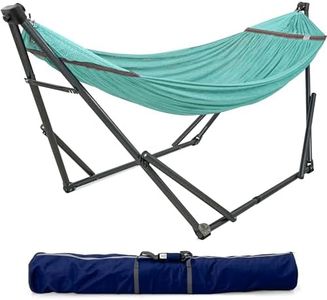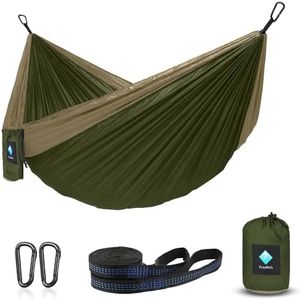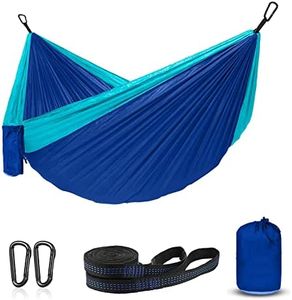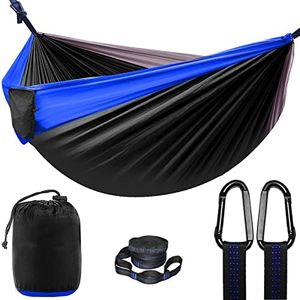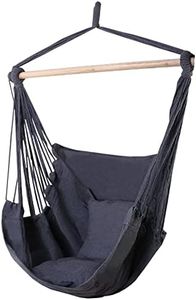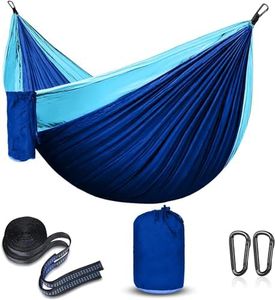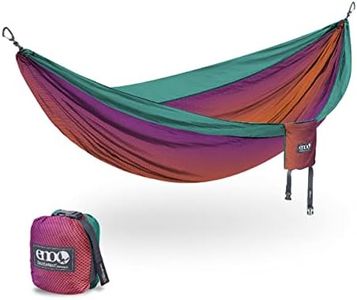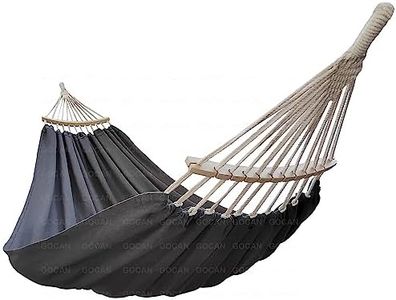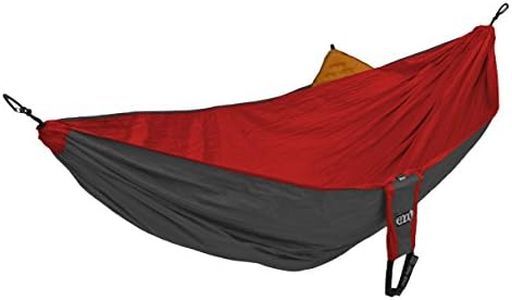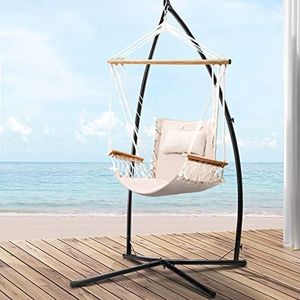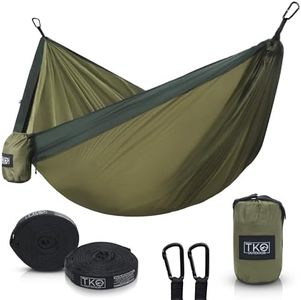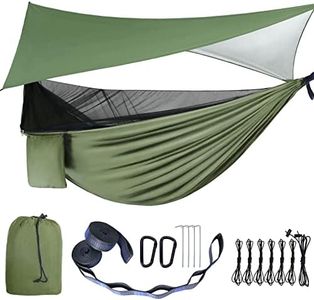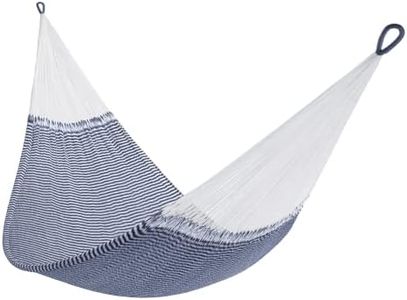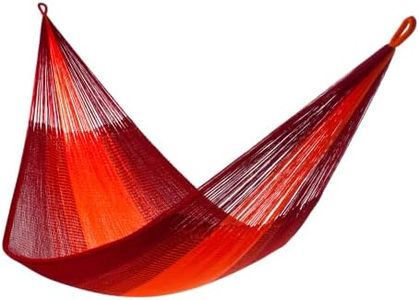We Use CookiesWe use cookies to enhance the security, performance,
functionality and for analytical and promotional activities. By continuing to browse this site you
are agreeing to our privacy policy
10 Best hammocks
From leading brands and best sellers available on the web.Buying Guide for the Best hammocks
Choosing the right hammock is about understanding the environment where you'll use it and the kind of experience you want. Hammocks can be used for relaxing at home, camping, hiking, or even as sleeping gear. The options range from lightweight, portable types to sturdy and comfortable models for the backyard. Focusing on what you'll use your hammock for will help narrow down your choices and ensure you end up with the best comfort and practicality.MaterialThe material of a hammock determines its comfort, weight, durability, and how easy it is to clean. Common options include cotton, polyester, and nylon. Cotton is soft and comfortable but can absorb water and take longer to dry, making it best for home use. Polyester and nylon are lighter, more weather-resistant, and dry quickly, which is perfect for camping or outdoor adventures. If you want a cozy spot for your backyard, cotton may be ideal. For travel or hiking, opt for nylon or polyester.
SizeHammocks come in single and double sizes. The size determines how much space you’ll have to relax and your comfort level. Singles are around 4-5 feet wide and are great for one person; they’re lighter and more portable. Doubles are 5-6 feet wide, offering more room to stretch out or let two people relax together, though they’re a bit heavier and bulkier. If you’re looking for solo relaxation and portability, go for a single. For extra comfort or sharing, choose a double.
Weight CapacityThe weight capacity tells you how much load a hammock can safely hold. Hammocks are typically rated between 250 to 500 pounds. It's important to pick a hammock that can handle your weight plus anyone else who might use it at the same time. Always check for a safe margin; if you’re close to the maximum weight limit, it’s best to choose a hammock with a higher capacity for safety and durability.
PortabilityIf you plan to carry your hammock while traveling, camping, or hiking, portability is key. Portable hammocks are lightweight, compact, and often come with a stuff sack. They may have fewer accessories but are easy to pack and carry. On the other hand, stationary models designed for backyards might be heavier and come with stands. Think about where you'll use the hammock most—go portable for adventures, or prioritize comfort and extra features for home use.
Suspension SystemThe suspension system refers to how the hammock is hung, often using straps, ropes, or hooks. Simple straps are easier to set up and adjust, and they’re usually more tree-friendly, while ropes might require more knots and practice. Some hammocks come with built-in systems, while others don’t include suspension gear at all. If you want hassle-free setup, look for hammocks with good, adjustable straps. If you enjoy tinkering or already have gear, basic models might be fine.
Weather ProtectionIf you’ll use your hammock outdoors, especially for sleeping, weather protection is crucial. Some hammocks come with built-in or optional mosquito nets and rain tarps to keep bugs and rain away. These features are less important for indoor or backyard lounging but essential for camping. If you’re planning overnight stays or extended use in nature, prioritize models with weather and insect protection.

